
Sculpture of Finnish composer Jean Sibelius, whose ‘Finlandia’ is one of classical music’s most beloved compositions.
by Sam Juliano
The Ridgewood Symphony Orchestra have been performing for seventy-six years in the affluent Bergen County, New Jersey town that bears its name. Their annual concert schedule usually allows for three full venues, which are usually organized by way of form, common instrument, composer or theme. The concert of Friday, November 7 brought together two famed organ compositions – Bach’s Toccata and Fugue in D Minor and Camille Saint-Saens’ Symphony No. 3, also referred to as the “Organ” Symphony. Completing the classical quartet that comprised the concert were two renowned nationalistic works: Finlandia by Jean Sibelius and The Moldau (Vltava from Ma vlast). While no classical music lover attends these local venues because they are expecting the polish, expertise and experience of the New York Philharmonic, they usually are able to revel in the passion and commitment of an ensemble that includes talented music students from local high schools and orchestral free lancers who are thrilled to secure such opportunities.
The idea of nationalism has been subverted in recent years, as the intended spirit has been hijacked by fanatics, who equate patriotism with terrorist acts against innocents. Yet as he grew up Sibelius lived in a Finland controlled by Russia. He also lived in a time when his countrymen were expected to speak Swedish. Sibelius dodged these resented influences to attend a Finnish School, where he later developed an appreciation of his country’s rich literary tradition, which many years later he turned to when he wanted to write music to express his opposition to the Russianization of his country. The patriotic poem, “The Melting of the Ice on the Ulea River” served as an inspiration for a four-episode tone poem, which eventually came to be known as Finlandia. One of the most stirring compositions in the classical repertoire, this “tone poem for orchestra” has long been regarded as the unofficial Finnish national anthem, and it debuted at the Paris World Exhibition of 1900, where it was performed by the Helsinki Philharmonic. The piece opens with repeated brass turbulence which projects a measure of foreboding. Ridgewood’s players were fully up to this provocative opening statement, which segues into a benign calm before the storm, and then on to a brisk and energetic passage in celebratory mode before the rapturous and expansive main theme makes its appearance – a theme of incredible emotional power that would rouse even those in a coma with its hymn like coda that beckons it’s listeners to offer their undivided attention and reverence. You don’t have to be Finnish to be moved to tears. One of western music’s most renowned melodies then yields to a comparatively bombastic passage which encores the rapturous hymn at the start, but it is clear what passage has won its listener’s hearts.
A devoutly patriotic work, The Moldau evokes Smetana’s love for his Czech homeland. From the countryside to the Bohemian Forest to the city of Prague, the composer was inspired by the flow of the Vltava River (in German The Moldau) from which he developed a six movement suite, Ma vlast. Each movement is a symphonic poem with its own story. The Moldau opens with a flute ripple that beckons the sight of a river in the distance. Another flute ripple and the emergence of strings, and you are transported into the Czech landscape – then there is a flood of strings that produce a sustained surge of melancholy. The poem is transcendental and a sort of Czech answer to Emerson and Thoreau, though of course the nature observed in The Moldau is transformed into a nationalist statement. The drums near the end describe the river’s agitated currents, which of course in a larger sense makes reference to the country’s political unrest in the mid 1800’s. Smetana is on record as having described his most popular composition:
The composition describes the course of the Vltava, starting from the two small springs, the Cold and Warm Vltava, to the unification of both streams into a single current, the course of the Vltava through woods and meadows, through landscapes where a farmer’s wedding is celebrated, the round dance of the mermaids in the night’s moonshine; on the nearby rocks loom proud castles, palaces and ruins aloft. The Vlatava swirls into the St. John’s Rapids; then it widens and flows toward Prague, past the Vysehrad, and then majestically vanishes into the distance, ending at the Labe.
Various rhythms and motifs are presented in what can be described as a boat ride down the river. The two part flute solo carries a running water motif, brass fanfare denotes a hunt, while a more colorful orchestral blend ushers in a bohemian folk song which defines the culture of the composer. The Ridgewood orchestra, under the guidance of Diane Wittry offered up a spirited reading of this whistle stop musical tour.
The far more well known Bach composition Toccata and Fugue in D Minor is known by horror fans as an ominous musical coda, but by any barometer of measurement it is the most famous organ piece ever written by the immortal baroque composer whose work on the instrument is unparalleled in quantity and greatness. The Ridgewood players did not write a new chapter on the piece, but their reading was certainly serviceable.
The Organ Symphony No. 3 in D Minor is one of Camille Saint-Saens’ most accomplished works, known chiefly by the rapturous melody of the finale. The symphony is closer to a tone poem than it is to some of the greatest works in that form written in the early part of the 1800’s, but it is widely regarded as innovative. Although it is referred to as the ‘Organ Symphony’ in truth the pipe organ is employed in two of the four sections, and includes virtuoso piano passages and orchestral writing that rivals the romantic era in sublimity. Because of its length and diversity the symphony was the main challenge for the Ridgewood Symphony orchestra, and along with organ guest soloist Greg Zelek they managed a commendable and committed reading that earned a rousing ovation.






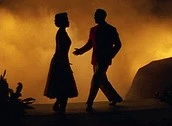
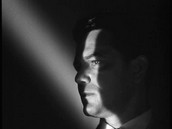

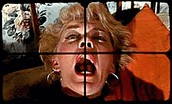

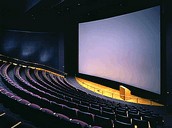

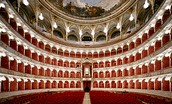








 Click on names for archives
Writers/Founders
Click on names for archives
Writers/Founders
Much jealousy over the Sibelius and the Smetena: they’re both pieces that I love. I’m glad to hear the Ridgewood Symphony Orchestra gave a creditable account of them. You lucky fellow!
John–I am thrilled to hear we are again on the same page! The Ridgewood Symphony orchestra did indeed perform quite well, and I must say I was particularly impressed with their readings of FINLANDIA and THE MOLDAU. Thanks so much my friend!
Sam, I would have done anything to hear Finlandia in that venue, though I know if I did I’d have that composition in my head for several weeks. But heck, I could do plenty worse. I once heard it at the Bergen County PAC in Englewood, and was very satisfied with the performance. I am not familiar with the Organ Symphony. I have heard the Moldau and love it. Of course who hasn’t heard Bach’s Toccata and Fugue many times in their lives?
Fantastic review in your special element. I like that you chose to take on the two nationalist pieces in particular.
Frank, I would have loved to have you there! Yes that is a good way to put it as far as having the tune in your head indefinitely. I’ve been to PAC many times, and happy to hear you were pleased with the performance. So true what you say of the exceedingly prolific Back piece. I actually did indeed to mainly concentrate on the nationalistic pieces but of course this entire program was marvelous. I hop you get to the Organ Symphony my friend. Many thanks!
I was going to ask if you regularly do music reviews or if this is a one off, but I see on the side panel you have done tons in opera and classical. You are an amazing guy Sam. Mark and I know the Ridgewood Symphony orchestra, and once took in a Beethoven symphony, which was paired with a violin concerto. I love Finlandia and the Toccata and Fugue in d minor. Would have loved to be in attendance. You have perfectly described the orchestra, and of the fine work they do. Just a wonderful, passionate and knowledgeable review.
Celeste, I adore film, literature, art and theater, but there is nothing I love more than classical and opera. I love writing about music more than any other art. Thanks for checking out the sidebar archive links! That particular concert you attended sounds more than a little familiar. I am sure I was there! I think it was the Fifth Symphony. Thanks so much for the exceedingly kind words.
I find it interesting how the Ridgewood group divided the venue. Two organ pieces with two famed works of nationalist fervor. I am not sure what the connection is between the two pairings, but I’m still thinking there must be one.
I know the Organ Symphony is misleading, as the organ is only played for half of it and then as a kind of second fiddle to the rest of the orchestra. But what a beautiful symphony it is. As you say Sam, it features several styles. I am with everyone else on this thread with Finlandia, which soars and stirs every time you listen to it. And the Moldau is an acquired taste that I am happy to say I have acquired. I would have liked to hear the Toccata just to compare how it sounds from other ensembles, but it is hard to imagine any major departures.
I’m thrilled you have returned to reviewing music. Always a special treat.
Peter, I don’t think there was an intended connection between the two nationalist pieces and those partially performed on the organ. Absolutely right on what you say about the relatively sparing use of the organ in the organ symphony, though its presence is felt. Yes the symphony is audacious and it embraces a number of styles. Great to hear you are a big fan of FINLANDIA and THE MOLDAU. Many thanks for the exceedingly kind words my friend.
Beautiful review. Exquisite writing. You make me want to be a better person.
That is an ultimate compliment Jarie. I will treasure it my friend.
Sam, your masterful account of the historic reach of Finlandia and The Moldau offers so much food for thought. Principally, I think, those works would be igniting social inspirations far beyond the concert hall.
We had a similar experience on the evening of November 14, when the symphony orchestra here prefaced the scheduled program with Edward Elgar’s centre-point of the Enigma Variations in recognition of the outrage and the victims in Paris. Those 5 minutes of fantastic depths eclipsed the rest of the concert.
Jim, I thank you so much for this masterful response! How overwhelming that must have been to hear the Enigma Variations (I adore that piece!) in that context. I can only imagine that last five minutes had been! But yes, ‘inspiration beyond the concert hall’ pretty much sizes it up. Thanks again my friend!